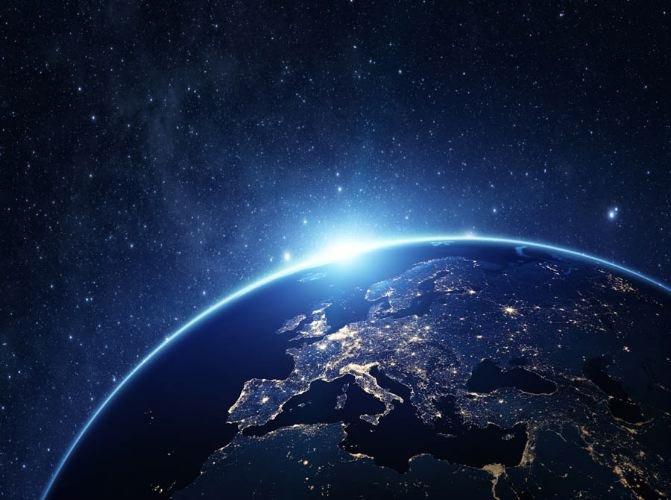Table of Contents
Introduction
The crust is the outermost layer of the earth and comprises 1% of the earth’s surface. It is composed of solid rock and formed minerals that usually form slowly over a long period of time. There are many elements in the Earth’s crust, 7 of the 10 most abundant elements are metallic elements.
Table 1. 7 Most Abundant Metal Elements in the Earth’s Crust
| Metal Element | Percentage |
| Aluminum | 8.23% |
| Iron | 5.63% |
| Calcium | 4.15% |
| Sodium | 2.36% |
| Magnesium | 2.33% |
| Potassium | 2.09% |
| Titanium | 0.565% |
1. Everywhere Aluminum (8.23%)
Aluminum makes up 8.2% of the earth’s crust. It is the most abundant metallic element in the earth’s crust that usually occurs in the form of compounds such as aluminum sulfate and aluminum oxide.
Consumers find this silvery-white, lightweight, malleable metal in various industries. Due to its low density, good corrosion resistance, and ease of forming, aluminum is used in a wide range of products such as foils, kitchen utensils, and aircraft parts.
2. Iron – Most Commonly Used Metal (5.63%)
Iron makes up about 5.6% of the earth’s crust, mainly in the core. This lustrous grayish metal has been used by humans for many years in construction and manufacturing. About 1.3 billion tons of crude steel are produced from iron every year. There are various types of steel such as stainless steel and cast iron. Stainless steel is highly corrosion-resistant. Cast iron with 3-5% carbon is used to make pipes, valves, and pumps. The element iron is also important for organic life. It is an essential component of human blood.
3. Calcium – Bone Growth Factor (4.15%)
About 4.2% of the earth’s crust is composed of calcium. It is found in many types of rocks, including marble, chalk, limestone, shells, and pearls. The compounds of this silvery-white soft metal are commonly used. For example, limestone, which is mainly composed of calcium carbonate, is used directly as building material and indirectly as cement. Calcium carbonate is also used in steelmaking to remove silica impurities. In addition, the calcium element is essential for human growth in terms of bones. It can form hard crystals when combined with other minerals, giving strength and structure to bone.
4. Sodium and Salt (2.36%)
Sodium makes up about 2.4% of the earth’s crust, and it is very reactive when isolated in air or water. This soft metallic element usually exists in compound form, with sodium chloride (table salt) being the most common. Sodium salts have many uses besides the pure metal form. Adding salt to food increases the salinity, balances sweetness, and reduces bitterness. It is also often used in the chemical industry. In addition, the element sodium is essential for all living things as it helps maintain proper fluid balance.
5. Magnesium – Light Metal (2.33%)
Magnesium makes up about 2.3% of the earth’s crust. It does not exist unbounded. Instead, it is found in minerals such as magnesite and dolomite. The ocean contains trillions of tons of magnesium.
Magnesium is a very light metal. By the way, it is 75% lighter than steel, 50% lighter than titanium, and 33% lighter than aluminum. This lightweight metal ignites easily in the air and burns with a bright light. Magnesium is therefore used in lightweight products such as car seats, luggage, laptops, and cameras. It is also used in torches, firecrackers, and sparklers. This element is also vital to living organisms as it is necessary for the synthesis of chlorophyll, a chemical that allows plants to capture sunlight and carry out photosynthesis. Everything in the world depends on the oxygen and energy produced by photosynthesis to live. In other words, without magnesium, there would be no photosynthesis and no life.
6. Potassium – Another Highly Reactive Element (2.09%)
About 2.1% of the earth’s crust is composed of potassium. Potassium always exists in the form of compounds because pure forms of potassium are highly reactive with both oxygen and hydrogen. Potassium chloride, the most common potassium compound, is used in fertilizers. Another compound, potassium carbonate, is used in making soap and glass. Also, the element potassium is very important as it is important in maintaining the balance of body fluids and electrolytes.
7. Titanium – Strong and Light (0.565%)
Titanium makes up about 0.6% of the Earth’s crust. It is found in minerals such as rutile and ilmenite. With a rare combination of extreme strength and lightweight, titanium metal is used in everything from aircraft to artificial joints in humans. Due to its low density and high strength, titanium is used to make alloys for aircraft, spacecraft, and rockets. Consumers will also find titanium tubes in power plant condensers. Additionally, titanium metal is used in surgical applications and dental implants as it bonds well to the bone.
Conclusion
The above is an introduction to 7 of the 10 most abundant metallic elements in the Earth’s crust. Most are strong, ductile metals with high electrical and thermal conductivity. If you are interested in sourcing the above metals in bulk, please contact us. We also accept small orders. Please contact our sales team for more information. Advanced Refractory Metals (ARM) provides a wide range of metals and alloys at competitive prices.

